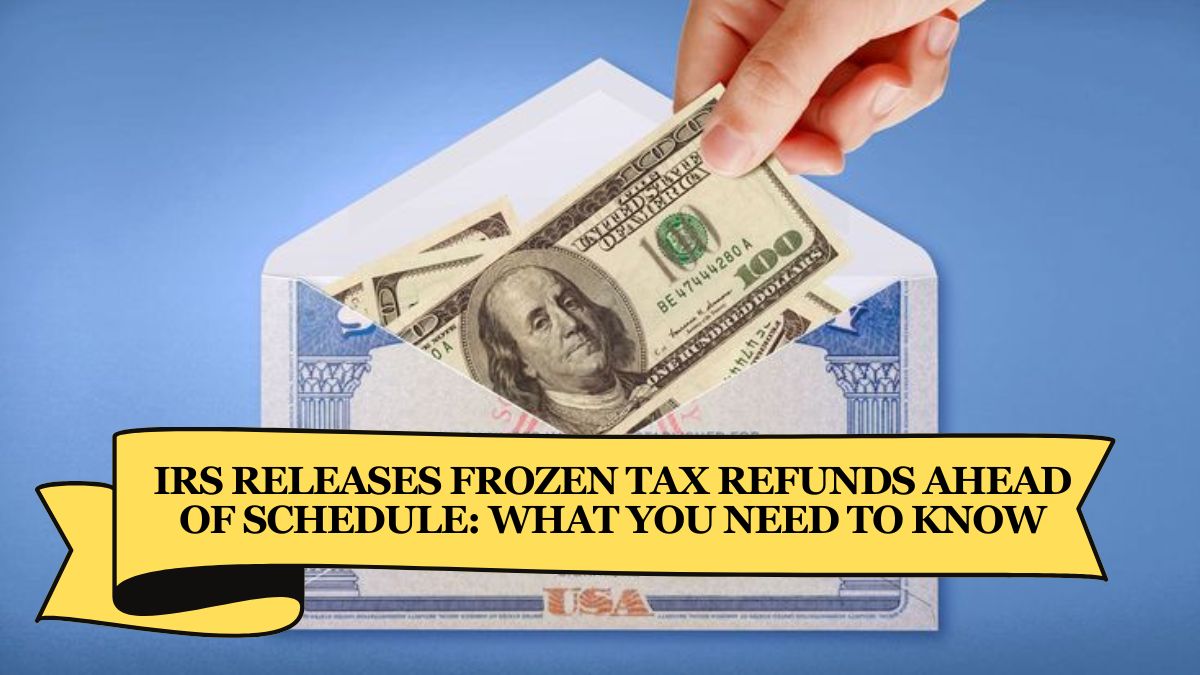For many taxpayers, receiving tax refunds can provide much-needed financial relief. However, in 2025, the process has been faster than usual for some. The IRS has started releasing tax refunds that were previously frozen for legal reasons. These refunds, especially for taxpayers who filed their returns correctly and chose direct deposit, are now arriving earlier than expected. This article explains how the IRS is speeding up the refund process and what it means for taxpayers.
IRS Starts Releasing Frozen Refunds
In mid-February 2025, the IRS began releasing tax refunds that had been put on hold for several weeks. These refunds were frozen due to legal restrictions, but the agency is now disbursing them to certain groups of taxpayers. This is great news, especially for families who have been waiting for their refunds to help cover expenses.
Who Will Get Their Refunds First?
The IRS is focusing on taxpayers who filed their tax returns correctly and selected direct deposit for receiving their refunds. Direct deposit is the fastest way to get money, and it helps the IRS process refunds quicker. Some taxpayers might even get their refunds earlier than the original expected date of March 3rd. This means that people may get their refunds a few days ahead of time, providing unexpected relief.
Why Were These Refunds Frozen?
The refunds that were put on hold were specifically for people who claimed the Earned Income Tax Credit (EITC) or the Additional Child Tax Credit (ACTC). By law, the IRS cannot issue these refunds before mid-February. This restriction is in place to prevent fraud and ensure that all claims are legitimate. For taxpayers eligible for these credits, the wait is now over, and they are starting to receive their refunds.
Tracking Your Refund Status
For taxpayers who are eager to find out when their refunds will arrive, there are several ways to track the status of their payments. The IRS offers multiple platforms to help keep taxpayers informed. You can use the “Where’s My Refund?” tool on the IRS website, check your IRS account online, or download the IRS2Go mobile app. These tools are updated regularly and will give you the latest information on your refund.
What to Do if Additional Information is Needed
In some cases, the IRS might need more information from taxpayers before processing their refunds. If this happens, the IRS will send a letter to the taxpayer’s address with instructions on what to do next. It is important for taxpayers to read these letters carefully and provide any required information to avoid delays. The sooner you respond, the sooner you’ll get your refund.
Understanding Delays Due to Banks and Holidays
Even though the IRS may process refunds quickly, there can still be delays once the funds are sent to your bank. Financial institutions may take a few days to process the payments, especially if they are sent on weekends or holidays. It’s important for taxpayers to understand that this part of the process might take a little longer than expected. Be patient and check with your bank if you’re unsure about the status of your refund.
The IRS’s Efforts to Speed Up Refunds
The IRS has made several efforts to ensure that refunds are processed more quickly. For example, the agency has focused on simplifying the refund process and using direct deposit, which reduces the time it takes for taxpayers to receive their money. This has been especially helpful for those who depend on their refunds to cover expenses.
Why Direct Deposit is the Fastest Option
Choosing direct deposit for your tax refund can significantly speed up the process. With direct deposit, your refund is sent directly into your bank account, rather than through a check in the mail. This eliminates the wait for a physical check to arrive and ensures that your money is deposited much faster. The IRS encourages all taxpayers to opt for direct deposit to receive their refunds more quickly.
In summary, the IRS’s decision to release frozen tax refunds earlier than expected has brought much-needed relief to many taxpayers. If you filed your taxes accurately and chose direct deposit, you may get your refund sooner than you thought. Keep in mind that the IRS offers tools to help you track your refund, and understanding potential delays from financial institutions can help manage expectations. By following the IRS’s guidance and staying informed, you can ensure that your refund reaches you without unnecessary delays.
As the IRS continues to streamline its processes, taxpayers can expect quicker, more efficient refunds in the future. This shift is part of the IRS’s ongoing commitment to improve the overall taxpayer experience. So, if you’re still waiting for your refund, be sure to check the available resources and track your payment status to get your money on time.
You Must Visit: California State Online

